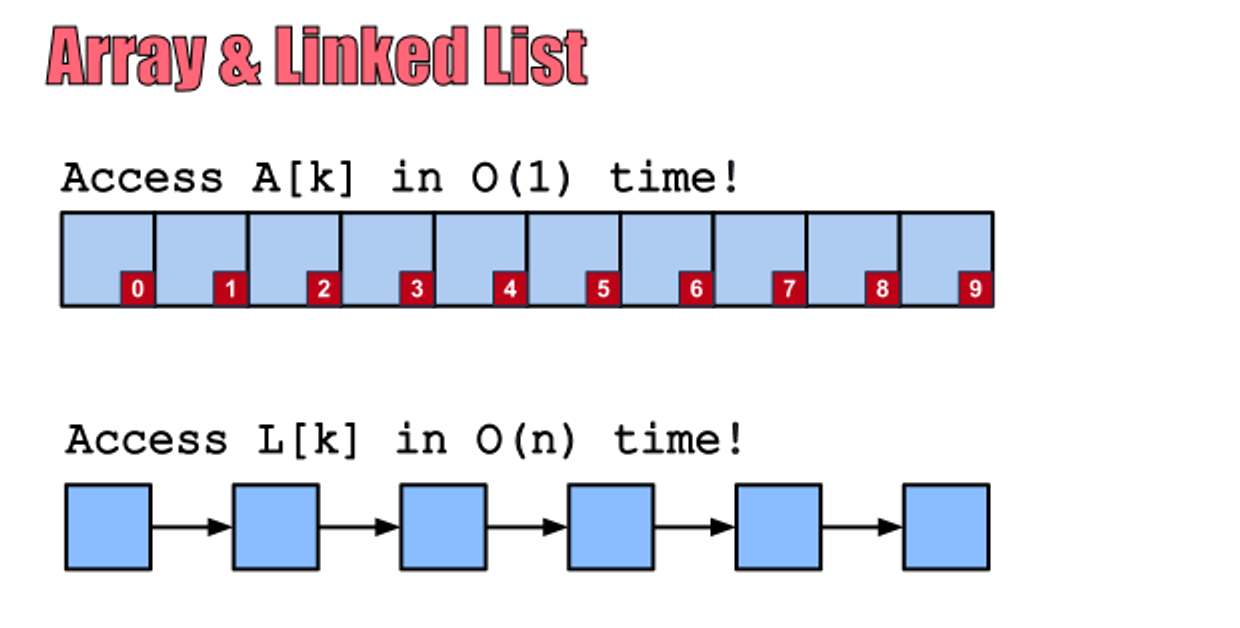
Linked List
2023, Aug 28
Today I’m going to talk about ‘Linked List’.
The concept itself is not difficult to understand, as the picture below shows.

The ‘linked list’ is cumbersome to find, but it is a very good way to add and delete contents.
I’m trying to write in the direction I understand.
# First create the first room with nothing in it.
class LinkedList:
def __init__(self):
self.head = None
# And declare a function to 'append' the other rooms.
def append(self, val):
# If there is no head at the first start
if not self.head:
self.head = ListNode(val, None)
return
# If the head already exists, it will continue to the next room, find the one without 'next' and 'append' to it.
node = self.head
while node.next:
node = node.next
node.next = ListNode(val, None)
# Now we convert a normal list to a 'Linked List'.
lst = [1, 2, 3]
l1 = LinkedList()
for e in lst:
l1.append(e)
print(l1)
With this level of understanding, I took the quiz right away.
Palindrome Linked List
- Given the
headof a singly linked list, returntrueif it is a palindrome(A palindrome is a sequence that reads the same forward and backward.) orfalseotherwise. - Example 1 Input: head = [1,2,2,1]
Output: true - Example 2 Input: head = [1,2]
Output: false
# Imported the same thing as 'append' to 'linked list'.
class LinkedList:
def __init__(self):
self.head = None
def append(self, val):
if not self.head:
self.head = ListNode(val, None)
return
node = self.head
while node.next:
node = node.next
node.next = ListNode(val, None)
# Declare a function called 'isPalindrome'.
def isPalindrome(head):
arr = []
# 'True' if the first room is empty
if not head:
return True
# Append 'head', which is made in the form of 'linked list', into 'list' called 'arr'.
node = head
while node:
arr.append(node.val)
node = node.next
# It compares the first and last number using 'pop' and returns 'False' if they are not equal.
while len(arr) > 1:
if arr.pop(0) != arr.pop():
return False
return True
l1 = LinkedList()
for num in [1, 2, 2, 1]:
l1.append(num)
l2 = LinkedList()
for num in [1, 2]:
l2.append(num)
print(isPalindrome(l1.head))
print(isPalindrome(l2.head))
Even now, I don’t really understand much.
But I will continue to challenge myself without giving up.